Genre: Action Developer: Vivid Image Publisher: Psygnosis Players: 1-2 Released: 1994
Today we’ll take a closer look at one of the more uncommon entries in the Mega Drive library of games. Yes, I said Mega Drive, not Genesis, for you see, this little underappreciated gem of a platformer never saw a release either in the U.S. or in Japan. Rather, it was a European exclusive title only! Because of this limited and very low profile release, this game somewhat managed to stay under the radar of most gamers. Which is unfortunate, because what we have here is actually a pretty solid and fun beat-’em-up/platformer hybrid spanning over a whopping fifteen levels that’s well worth checking out.
Second Samurai has its roots in the European Amiga scene. Its predecessor, the aptly named First Samurai, was somewhat of a schoolyard classic. The story of a lone Samurai hunting the demon which killed his teacher throughout several time periods was one of those games almost everyone seemed to have played on home computers like the Amiga 500 or the Atari ST and C64 ports, but not many people actually purchased a copy of it. Still, its popularity back then at least warranted a port for the SNES, whose rather lackluster quality didn’t serve to give the game much international prominence, especially not among console owners.
The 1993 sequel for the Amiga saw pretty much the same storyline but threw in a two-player mode for good measure (hence the double-meaning behind the title Second Samurai). The year after, the decision was made to port the sequel to the Mega Drive (even though this platform had never seen an incarnation of the first game, rendering the title somewhat meaningless). The resulting game is a prime example for the port of an Amiga game – done absolutely right for a change! To be completely honest, this may be the best port of an Amiga game I ever played on this console!
The samurai’s chase through time basically takes part in three different periods: The stone age, the far future, and lastly medieval Japan. The graphics were not taken directly from the home computer original but instead received a major overhaul. The sprites are big and, for an Amiga port, pretty detailed. Some character sprites have also been replaced entirely – instead of an Asian monk, for example, the sprite utilized for the second player now resembles a female samurai. Overall, this graphical update definitely works in the game’s favor, the looks are detailed and crisp. Multiple layers round out the visuals. Additionally, when you lose a life the head of the demon appears, taunting the players efforts, something also different from the Amiga original. It’s a nice touch that adds to the game’s atmosphere.
Moreover, some of the bosses simply look incredible and are huge, in one instance even spanning several screens. Each boss fight plays refreshingly different. Some can only be hurt in a certain vulnerable spot, while others can’t be hurt directly and need you to utilize the environment. Still others can only be hurt in a specific moment. The designers worked on some nice diverging boss patterns, forcing the player to adapt and learn different strategies throughout. To loosen the platforming parts up a bit, Vivid Image also decided to throw in some diverging levels. I guess you’ll admit that the idea of a samurai riding a Raptor or fighting a giant spaceship while flying a jet pack sounds pretty awesome! The score is also fitting, with a decent Japanese theme to it, though it gets a bit repetitive after a while and isn’t very memorable in the long run. Still, it suits the game just fine, so no complaints here.
Right from the start, there is a lot happening on the screen. Enemies often come swarming at you from all sides, so you have to keep moving constantly. The game pulls this off nicely, and not in one instance does flickering or slowdown occur, though it would have been nice to see more animations, especially on the more common enemy types. In each level you have to destroy a certain number of blue pots strewn throughout the level before you can continue – most of the time there are more than the minimum afforded number of pots around, so this task isn’t that hard to complete, even though sometimes they are hidden in power up gems.
While he starts out barehanded, picking up a white scroll grants the Samurai a sword that increases his attack range and does more damage than the regular kick, but take too many hits and you have to go back fighting with your fists and feet again. The game grants you several different attacks though that are executed by pressing the attack button and a specific direction simultaneously. Straight up and B does an uppercut, while pressing diagonally up does a high and diagonally down a low kick. This design takes a while getting used to, but it’s rather effective. Throughout the levels you’ll also pick up throwing daggers which come in pretty handy, especially during boss battles. Another nice touch is that you don’t instantly lose a life if you fall down a pit – you’ll only lose a bit of energy and get immediately thrown back up again.
In other regards, the game design is a bit flawed. Throughout the adventure, you have to perform a number of jumps with pinpoint accuracy in order to avoid falling down. From early on, there are passages where one needs to stand at an exact spot to avoid getting hit by falling rocks or other traps, with hardly a pixel to spare, so while the big size of the sprites makes for some nicely-detailed graphics, it also results in you getting hit quite easily. This pixel-exact accuracy the game forces upon you applies to some of the small puzzles as well, and until you get a hang of the controls you may have a hard time getting a grip on the rock the game wants you to throw, literally.
The addition of a two-player mode makes for some great cooperative play, but the fact that both characters share the same screen often puts a sudden stop into the flow of the game, since the screen which won’t scroll unless both players progress. This is another disadvantage of the big size of the sprites, since there isn’t much room onscreen to navigate, so you quite often get into situations where one character can’t progress since the other one is held back fighting off dozens of attackers. Even though there are four adjustable levels of difficulty, and you may change the options to start with three, five or even seven lives, but the game is pretty hard even at its easiest setting. For this reason you’ll need to keep a firm grip on the controller to avoid throwing it in the corner as soon as the second level. Fortunately, a password is granted after each level, so this evens things out a bit.
Still, Second Samurai is a lot of fun overall, and it certainly stands out from the masses, what with its interesting setting, diversified gameplay and its impressive length. The boss battles are especially very impressive and comprise the majority of entertainment this game delivers. Although it has a few flaws, it makes for a pretty good game. It truly is a shame that this one only saw a release in Europe. Should you be able to spot a copy, I’d strongly suggest you pick it up. It may be rather rare, but since it’s rather unknown you might get lucky and snatch up a complete copy rather cheap. For being that uncommon and underappreciated, Second Samurai is truly a gem well worth a place in your Sega games collection.
SCORE: 7 out of 10

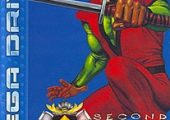
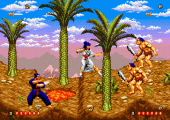
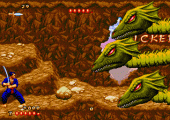
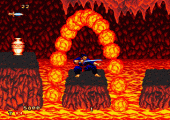
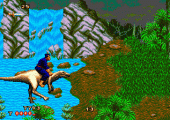
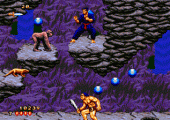
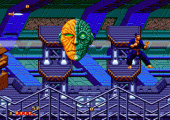
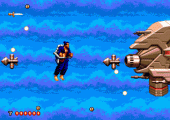
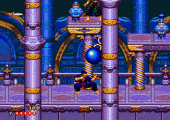
Imported this little gem from UK a few weeks ago. Was pricey, but so worth it! Fun, fun and more fun. Kind of reminds me of Kung Fury movie, super cheesy but super fun. Easily 8.5 out of 10 for me.
This is a nice little game, not perfect but really enjoyable. The pace is fast, the controls are spot on and the game is rather long and with a lot of diversity in its gameplay. I discovered this game only recently and I was surprised by how polished it was for a relatively unknown game. 7/10